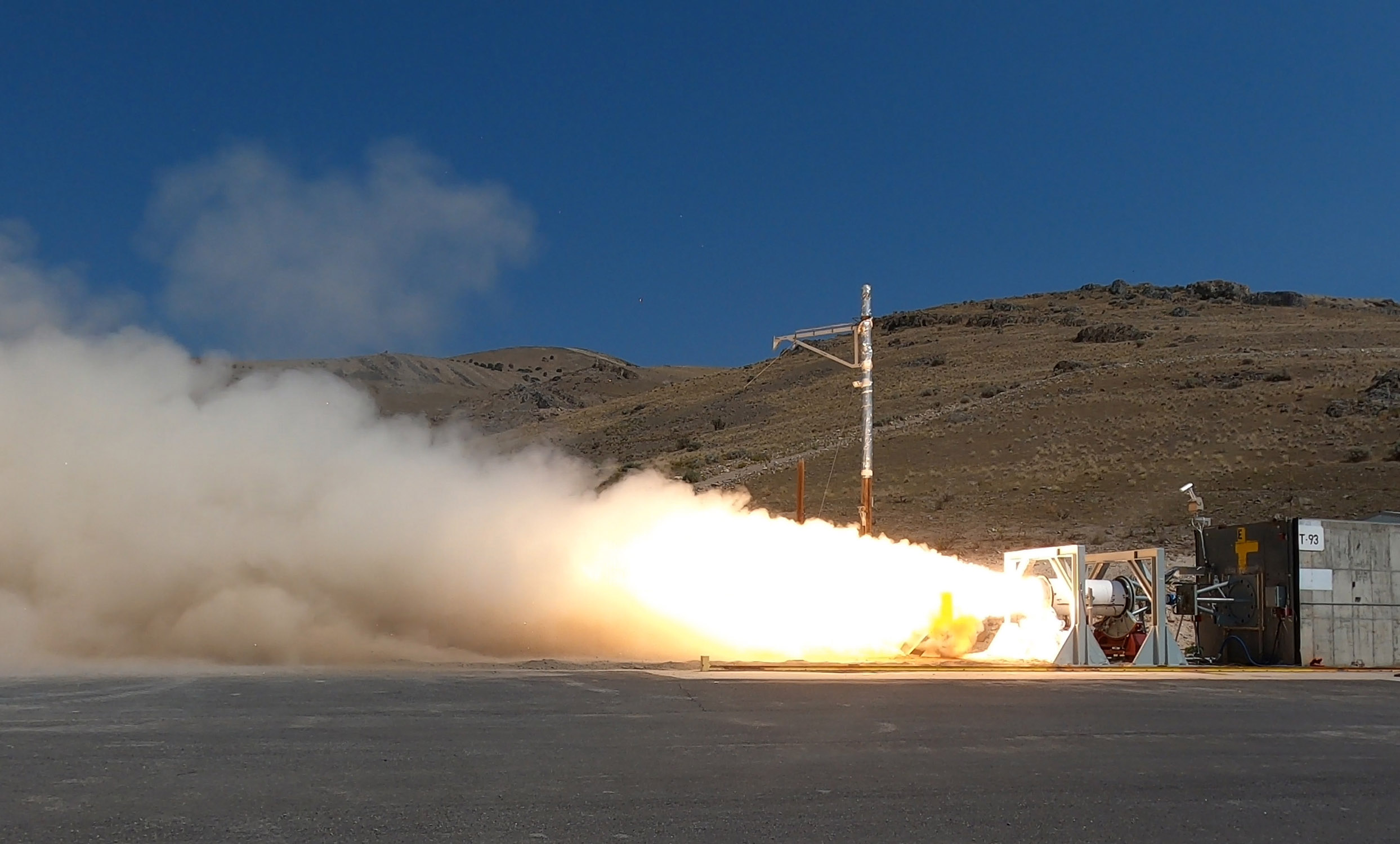
The Navy conducted a successful test of the Second Stage Solid Rocket Motor (SRM) on August 25th in Promontory, Utah as part of the development of the Conventional Prompt Strike (CPS) offensive hypersonic strike capability and the Army’s Long Range Hypersonic Weapon (LRHW). (U.S. Navy photo)
WASHINGTON: Without a proposed $80 million industrial expansion, the Navy and the Army won’t have enough missiles for their nascent hypersonic weapons programs, the Navy warned lawmakers recently.
By fiscal 2025 the Pentagon wants to produce the assembled missiles, known as all-up-rounds or AURs, at a rate of 24 per year, but the current capacity is half that, according to a Navy document obtained by Breaking Defense. The document outlines the Navy’s many objections to cuts made in the defense spending bill by congressional appropriators, from slashed funding for the surge sealift fleet to F-35Cs.
Additionally, the document warns that production requirements for the advanced payload module needed to integrate the Navy’s hypersonic Conventional Prompt Strike (CPS) weapon onto both the Zumwalt-class destroyers and Virginia-class submarines also will be lacking. The capacity in FY24 would be only one per year — four less than the Pentagon’s requirement.
The Navy and Army are jointly developing two distinct hypersonic weapons, the CPS and the Long Range Hypersonic Weapon, respectively. The military’s current plan calls for CPS to be first integrated onto Zumwalt (DDG 1000) during a maintenance availability in FY24 and onto Virginia-class submarines in FY28.
Senate appropriators in their version of the FY22 defense spending bill are seeking to cut the $80 million funding for the industrial base expansion, in addition to $31 million sought in the president’s budget for Virginia-class submarine integration. In both cases, lawmakers cite the funding as “early to need.”
The Navy’s budgetary appeal also note the all-up-round production requirement requires 29 months of lead time, and the five modules require 28 months of lead time.
If the funding for industrial base expansion is cut in the FY22 spending bill, then the Navy says a variety of deployments for Zumwalt, Virginia-class submarines and Army activities would be short of needed all-up-rounds.
“If the industrial base expansion is not supported in FY22, 8 of 24 planned AURs for Zumwalt deployment, 8 of 24 planned AURs for deployed Army Batteries, 22 of 24 Army reloads, 10 of 12 Army training rounds, and 6 of 26 AURs for SSN deployment and Navy inventory objectives will not be delivered,” according to the Navy document.
The service in its appeal document separately objected to a $14 million cut from the Zumwalt destroyer program by House lawmakers, again citing the Navy’s schedule to integrate CPS onto the vessels beginning with DDG 1000 in FY24.
Vice Adm. Johnny Wolfe, director for the Navy office principally responsible for developing CPS, the Strategic Systems Programs, said his office “cannot be ahead of need in this program.”
“We get that a lot. ‘You’re ahead of need.’ My answer is we can’t be ahead of need for what we need to do with this weapon system,” Wolfe said at a public event last month.
Additionally, if the $30 million for submarine integration is not funded, the Navy says integration on the Virginia submarine Wahoo (SSN 806) could be delayed by “at least one year.”
Multi-ship amphib buy could net $900M in savings, say Navy, Marine Corps officials
Lawmakers gave the Navy authorities to ink a multi-ship amphib deal years ago, but the service has not utilized that power yet.


























